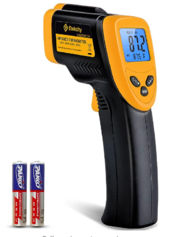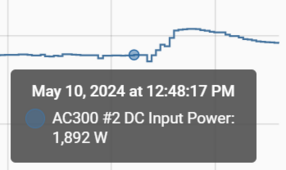TL;DR: Is this reduction in peak power a result of my panels getting hotter? I didn't check voltages, so don't know if there was clipping going on at the inverter level. We have another glorious day today, hotter than yesterday, and my production curve is already just-slightly-lower than the day before.
Yesterday was a beautiful day. Perfect weather. I think it hit 80 degrees ambient. I looked at my production, and noticed the peak was... flat. That horizontal line is 2 kW.

The day before was cloudy in the morning. The clouds prevented good production, but it would routinely go higher than the day before, and the peak wasn't flat. When the clouds finally parted, it was glorious production until my batteries filled.

Yesterday was a beautiful day. Perfect weather. I think it hit 80 degrees ambient. I looked at my production, and noticed the peak was... flat. That horizontal line is 2 kW.

The day before was cloudy in the morning. The clouds prevented good production, but it would routinely go higher than the day before, and the peak wasn't flat. When the clouds finally parted, it was glorious production until my batteries filled.





